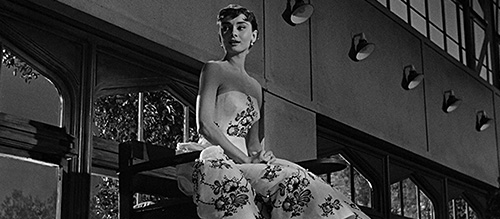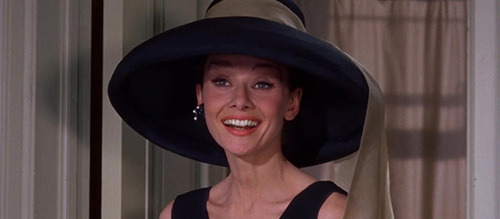Audrey Hepburn’s 3 Career-Defining Performances
Audrey Hepburn is indisputably a fashion icon and one of the greatest stars of American and international cinema. She starred in some of the most popular films of the 20th century, though it is well known that her acting career skyrocketed in Hollywood in the years following her performance as Princess Ann in the 1953 film Roman Holiday. Not only a fantastic actress and worldwide celebrity, Hepburn also became an all-time fashion icon and even a role model for her engagement with humanitarian causes in her later career. An all-time silver screen great and icon of the mid-20th century, Hepburn was a screen presence comparable with few others, her work as memorable and iconic as anyone else you can care to imagine. What follows is a list of three such performances; the movie roles that would come to define Hepburn’s extensive filmography and prove to be career-defining in how iconic each of them were.
1. Roman Holiday (1953)
Audrey’s Hepburn first breakthrough role was as the young and rebellious princess Ann, a character who spends two days incognito in Rome in order to escape from the extremely rigid and oppressive royal etiquette. While there, she meets the American editor Joe Bradley (Peck) and the two fall in love. In Roman Holiday, the young Hepburn shows already remarkable acting skills and carries herself with the effortless grace that later became her signature – both when wearing the richly decorated royal dresses and the more casual yet sophisticated outfits that symbolise her more carefree attitude. This role established her as a top actress in Hollywood, earning her an Academy Award and BAFTA as best actress and thus paving the way for her later success, establishing a new beauty and fashion icon in the process.
2. Sabrina (1954)
Naive, immature and in a hopelessly one-sided romance with David Larrabee (William Holden), Hepburn’s titular Sabrina is in some ways very similar to the character that broke the actress through to the big time in Roman Holiday, only each character wants different things and, of course, their social statuses don’t align. In opposition to the previously mentioned film, the task of Hepburn’s character in Sabrina is to climb the social ladder as opposed to attempt to move down it and escape her privileged life, and though she is successful in achieving that goal, it doesn’t come about as she had expected.
In this film Sabrina changes and matures thanks largely to falling in love with David’s brother Linus (Humphrey Bogart). Hepburn’s iconic style – that was at its early stages in Roman Holiday – is completed in Sabrina; what we would come to know and love of Hepburn as an on-screen presence was well rounded from as early as this 1954 release. This is apparent not only in the way she is presented – the choice of the beautiful outfits she elegantly wears, making history in costume design and increasing her popularity among young actresses and female audiences – but also her portrayal of elegance, charm and grace, each of which were no more iconically packaged than in the third and final film on this list…
3. Breakfast At Tiffany’s (1963)
Holly, Audrey Hepburn’s character in Breakfast at Tiffany’s, is a free spirit, a carefree girl in search for her place in society, but one who is also troubled and has a complicated past. Issues arise in her life when her attitude, perceived to be innocent and naive, gets her in troubles she doesn’t foresee coming; dating aggressive men and making friends with imprisoned gangsters, for example. But, everything begins to change when she meets the penniless writer Paul Varjak. Through him, and at times in spite of him, Hepburn’s Holly Golightly undergoes an inevitable reshaping that will eventually free her from the prison cell that she has created herself by living day after day in the swinging Manhattan without boundaries or real friends.
This is perhaps her most well-known performance, and one that seems to have had an impact on her subsequent roles. In later films, such as How to Steal a Million (1966) and Two for The Road (1967), her characters resemble Holly in a lot of ways: they appear to be lost, naive at times and looking only for fun and pleasure in life, at least on the surface; meanwhile deep down they are scarred by their past and looking for a refuge in which to hide.
As iconic as her work was in this 1963 release undoubtedly is, her evolution as a fashion icon can be said to reach its peak. Her grace and charm are apparent on the screen and emphasised by the choice of clothing that compliment Hepburn’s slim figure and iconic hairstyle, each of which have become synonymous with the Hepburn name in the decades since.
Permeating popular culture perhaps moreso than any other actress of her era, Audrey Hepburn became an icon more through Breakfast at Tiffany’s than any other film in her career, the early 60s picture becoming the vision of Hepburn most moviegoers and fashion followers go to when thinking of Hepburn’s name, the performance being equally as influential and enjoyable.




